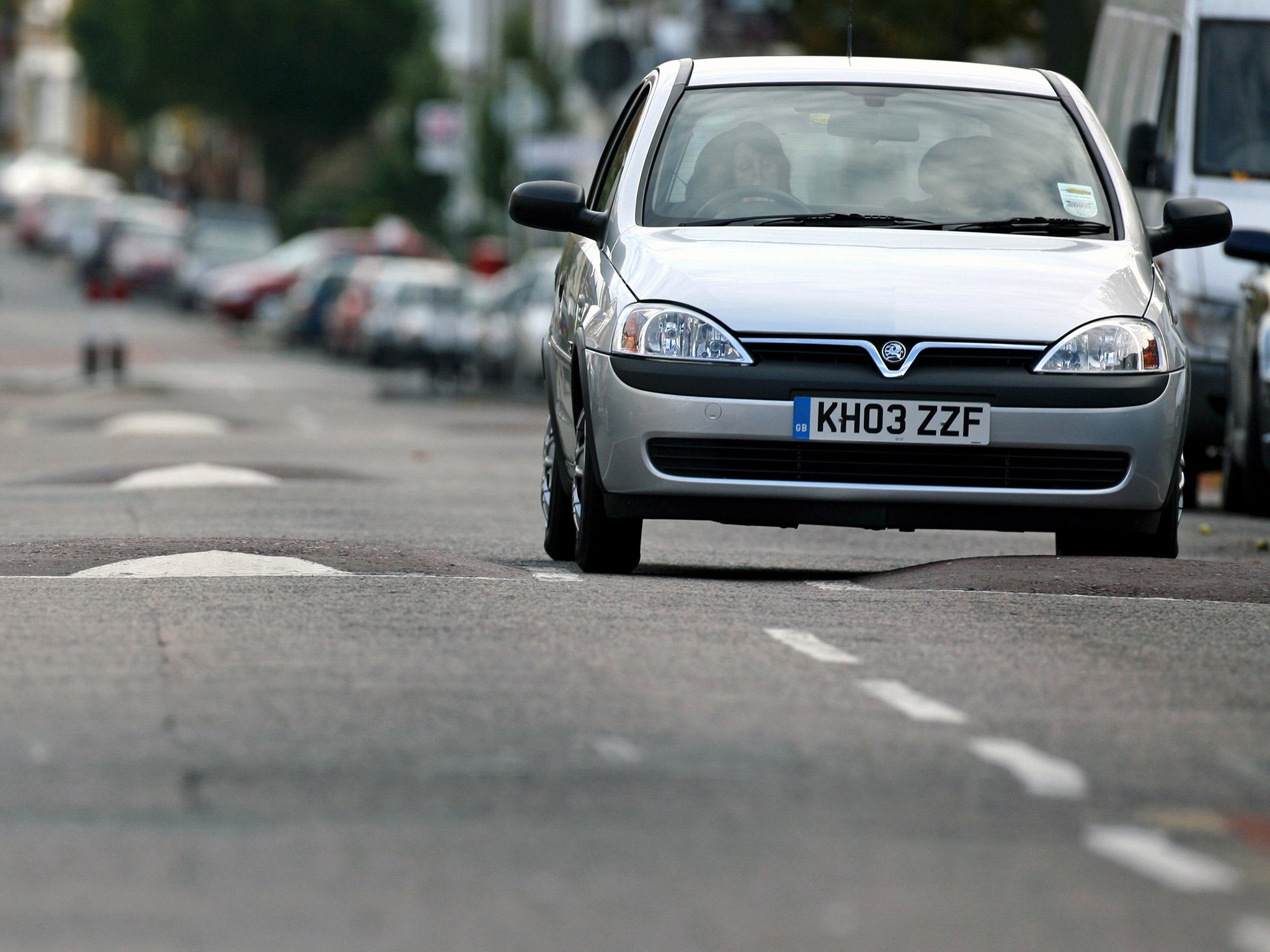Variable speed limits on motorways could cut air pollution, health experts suggest
Around 25,000 deaths a year in England can cite air pollution as a contributory factor

Your support helps us to tell the story
From reproductive rights to climate change to Big Tech, The Independent is on the ground when the story is developing. Whether it's investigating the financials of Elon Musk's pro-Trump PAC or producing our latest documentary, 'The A Word', which shines a light on the American women fighting for reproductive rights, we know how important it is to parse out the facts from the messaging.
At such a critical moment in US history, we need reporters on the ground. Your donation allows us to keep sending journalists to speak to both sides of the story.
The Independent is trusted by Americans across the entire political spectrum. And unlike many other quality news outlets, we choose not to lock Americans out of our reporting and analysis with paywalls. We believe quality journalism should be available to everyone, paid for by those who can afford it.
Your support makes all the difference.Variable speed limits and average speed checks should be put in place across England's motorway network in a bid to cut down on air pollution, health experts have said
Such a move could reduce harmful emissions from cars, they explained.
New draft guidance from the National Institute for Health and Care Excellence (Nice) sets out a series of steps that it says need to be taken to reduce the harmful effects of air pollution on the nation's health.
Around 25,000 deaths a year in England can cite air pollution as a contributory factor - almost 5% of all deaths, Nice said.
The health watchdog has proposed a series of initiatives to help improve outcomes across the country including; promoting smoother driving, encouraging house builders to place living rooms at the back of houses away from roads, and hedgerows to protect cyclists using cycle paths.
Local planners have been urged to consider that some speed bumps could be causing higher emissions because instead of encouraging a slower speed, drivers tend to accelerate and decelerate towards them.
Meanwhile, “no-idling” zones should be installed around the nation's schools to prevent parents leaving their cars running during school drop-offs.
In its new draft guidance for England, Nice has also called for a review of trees lining streets in urban areas because evidence suggests that “in some cases they restrict street ventilation causing poorer air quality, in others they improve it”.
Provisional figures show that road usage is at record levels, with an estimated 320 billion vehicle miles travelled on Britain's roads in the year ending September 2016.
Road traffic is estimated to contribute to about a third of air pollution in urban sites.
The new Nice guidance advocates that local planners should “consider using variable speed limits and average speed technology on the roadside to promote a smoother driving style”.
Professor Mark Baker, director for the Centre of Guidelines at Nice, said: “If the traffic is such that you are stopping and starting, decelerating and accelerating, then that increases emissions, pollution and fuel consumption.
“In those circumstances, slowing everything down to 60mph or 50mph is the best approach - but not all the time.
“That's why variable speed limits are far more sensible than blanket 50mph or 60mph (limits).
“Variable speed limits are useful where at times the volume of traffic results in unhealthy driving conditions - which is stopping and starting.
“So M25 most of the time, M4 on a Sunday, M1 on a Friday evening.
“Variable speed limits are justified on roads which are busy enough for traffic to have to break for no other reason than that (the road is) blocked.”
Dr Nigel Jenkins, Nice's guideline committee expert, added: “The ideas behind variable speed limits and average speed control is to try and improve the flow of vehicles.
“Having a more consistent flow of vehicles improves fuel efficiency as well as emissions form the vehicle, in effect reducing them.”
Ralph Bagge, leader of South Bucks District Council and deputy chairman of the guideline committee, added: “Smooth driving reduces emissions and stop-start acceleration and deceleration braking is harmful.
“It is putting out more through the tail pipe but secondly braking is also grinding bits of very fine particulate matter which goes into the atmosphere.”
Figures released earlier this year showed that average speed cameras were monitoring drivers on more than 250 miles of Britain's roads.
Sections covered a range in length from just a quarter of a mile on London's Tower Bridge to 99 miles on the A9 between Dunblane and Inverness, according to research from the RAC Foundation
The first section of road to become permanently managed by average speed cameras was on the A6514 ring road in Nottingham in 2000.
The draft guidance, which has been devised for local authority staff and is currently out for consultation, also suggests:
- Planners should ensure newly built schools, nurseries and retirement homes should be placed away from busy roads.
- They should also consider that solid barriers which are placed next to roads to mitigate noise can actually lead to a wider dispersal of pollution.
- Towns and cities with pollution problems should consider implementing clean air zones and look into the possibility of introducing congestion charging zones.
- Local authorities may also want to look into setting a standard around the types of cars used for taxis.
- They should also consider public awareness initiatives such as “car free days”.
- Meanwhile, town planners should avoid cycle routes on heavily polluted roads. But where this is unavoidable, officials should consider foliage to screen cyclists from vehicles.
PA
Join our commenting forum
Join thought-provoking conversations, follow other Independent readers and see their replies
Comments